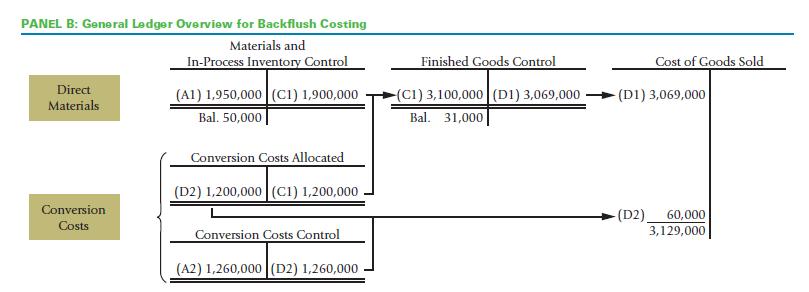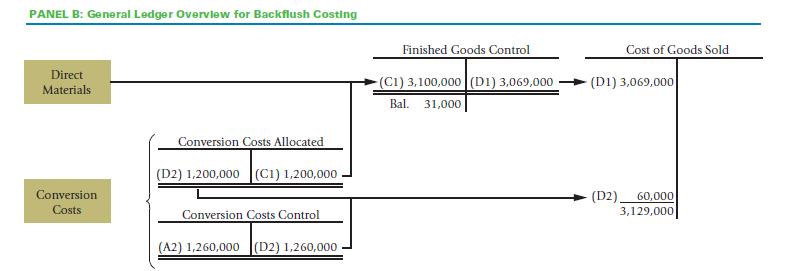Question:
Silicon Valley Computer (SVC), the producer of keyboards for personal computers, which is discussed in the chapter, is a subsidiary of El Camino Corporation. Each year, headquarters of El Camino provides a capital budget to each of their subsidiaries, the amount of which is determined by the size of the subsidiary’s balance sheet. The senior management of SVC is considering to simplify their accounting and to move to one of the backflush costing systems in Exhibits 21-7, 21-8, or 21-9. Refer to exhibits 21-7, 21-8, and 21-9. Which of the backflush costing systems should the senior management of SVC choose if they want to maximize the capital budget that they receive from headquarters? Show your calculations.
Data from Exhibit 21-7:


Data from Exhibit 21-8:


Data from Exhibit 21-9:

Transcribed Image Text:
EXHIBIT 21-7
PANEL A: Journal Entries
Journal Entries and General Ledger Overview for Backflush Costing and Journal Entries for
Sequential Tracking With Three Trigger Points: Purchase of Direct Materials, Completion of Good
Finished Units of Product, and Sale of Finished Goods (Example 1)
Backflush Costing
Stage A: Record Purchase of Direct Materials and Incurring of Conversion Costs
1. Record Direct Materials Purchased
Entry (A1) Materials and in-Process Inventory Control
Accounts Payable Control
2. Record Conversion Costs incurred
Entry (A2) Conversion Costs Control
Various accounts (such as Wages
Payable Control)
Stage B: Record Production Resulting in Work in Process
Entry (B1) No Entry Recorded
Stage C: Record Cost of Good Finished Units Completed
Entry (C1) Finished Goods Control
Materials and In-Process Inventory Control
Conversion Costs Allocated
Finished Goods Control
2. Record Underallocated or Overallocated Conversion Costs
Entry (D2) Conversion Costs Allocated
Cost of Goods Sold
1,950,000
Conversion Costs Control
1,260,000
3,100,000
3,069,000
1,950,000
1,200,000
60,000
1,260,000
1,900,000
1,200,000
Stage D: Record Cost of Finished Goods Sold (and Under-or Overallocated Conversion Costs)
1. Record Cost of Finished Goods Sold
Entry (D1) Cost of Goods Sold
3,069,000
1,260,000
Materials Inventory Control
Accounts Payable Control
Sequential Tracking
Conversion Costs Control
Various accounts (such as Wages
Payable Control)
Work-in-Process Control
Materials Inventory Control
Conversion Costs Allocated
Finished Goods Control
Work-in-Process Control
Cost of Goods Sold
Finished Goods Control
Conversion Costs Allocated
Cost of Goods Sold
Conversion Costs Control
1,950,000
1,260,000
3,100,000
3,100,000
3,069,000
1,200,000
60,000
1,950,000
1,260,000
1,900,000
1,200,000
3,100,000
3,069,000
1,260,000












